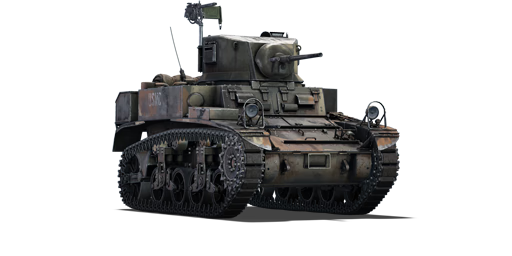The M3 Stuart light tank was developed from the M2A4, incorporating many improvements to the design such as a trailing idler suspension. Additional enhancements were soon implemented, primarily a new turret that came with new gun stabilizers, hydraulic turret traverse mechanism, and a turret basket for the turret crew, and the new design was named the M3A1 Stuart in 1941. The M3A1 gradually replaced the M3 light tanks in service, including in the United States Marine Corps (USMC), which received them in 1942. The M3A1 would serve in the USMC during their various Pacific Campaigns against the Japanese until the end of World War II. One modification performed by the USMC in 1944 was a flamethrower tank, which used 24 M3A1 and attached a flame gun in the hull machine gun position. These modified M3A1 were nicknamed "Satan" and were used in the various battles in the Marianas.
The M3A1 (USMC) was first introduced with the American ground tree in Update 1.45 "Steel Generals", and is available in the US Starter Pack on the Gaijin Store. The tank, performance-wise, is the same as the M3A1 Stuart in the tech tree in a unique camouflage scheme. As such, the M3A1 continues to show great mobility as characteristic of a light tank. While the 37 mm may seem anemic at its battle rating, it can still attack through enemy weak points, encouraging a gameplay of caution to wait for the right opportunity to catch the enemy off-guard on its flank as they either pass by the Stuart without noticing it, or are preoccupied with other allies.










 2 x (20 / 20 / 20) %
2 x (20 / 20 / 20) % 
 2 x 100 %
2 x 100 % 
